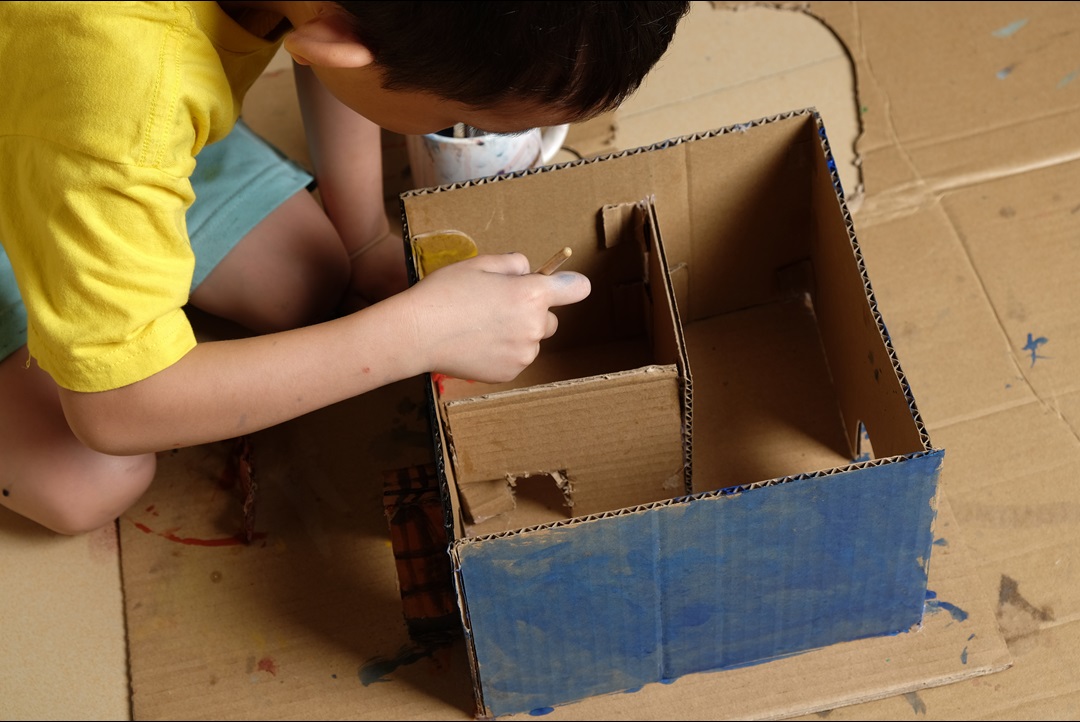
Early childhood teachers at Liberty Elementary in Omaha recently spent months getting reacquainted with the power of play.
Play is an important part of children’s learning, spurring curiosity, creativity, and teamwork, among other academic and social-emotional benefits. Children playing house can prompt a lesson on family dynamics and relationships. Assembling blocks or building a fort requires motor skills and spatial awareness.
“What do students get out of play? They develop empathy,” said Mary Beth Pistillo, a program specialist at the Buffett Early Childhood Institute at the University of Nebraska. “It allows them to dress up and take on different roles. You can implement so much of your different curriculum into it.”
Liberty, part of the Omaha Public Schools, is a School as Hub school under the Superintendents’ Early Childhood Plan. The Buffett Institute helps support the plan.
The School as Hub model envisions schools as connection points where families and children can access high-quality early childhood education from birth to Grade 3, including home visiting, quality preschool, aligned instruction in the early grades, and family and community engagement activities.
Pistillo coaches and facilitates professional learning for early childhood teachers. Starting last January, she led a book study involving district leaders and early childhood teachers, paraprofessionals, community facilitator, and principal at Liberty. They read and reflected on “Purposeful Play: A Teacher’s Guide to Igniting Deep & Joyful Learning Across the Day” by Kristine Mraz, Alison Porcelli, and Cheryl Tyler.
Early childhood teachers at Liberty had already worked with Pistillo on enhancing their classrooms and early childhood environments by using the Early Childhood Environment Rating Scale. The district’s early childhood coordinator suggested the play-based book study. OPS launched the Transforming Kindergarten initiative several years ago to carve out at least an hour of intentional playtime each day.
 Mary Beth Pistillo
Mary Beth PistilloThere’s often been tension between the idea of unstructured play and academic demands. The “Purposeful Play” book calls play a “pillar of school, and of childhood.”
"Play has positive impacts on children's development and academic skills,” said Amy Schmidtke, the Institute’s director of program development. “Play programs are critically important in preschool and Kindergarten classrooms because opportunities to play while learning are shown to accelerate children's literacy and math skills."
When it’s not prioritized in schools, play can become an afterthought, Pistillo said.
In many Kindergarten classrooms, “play right now is given a half-hour at the end of the day if there’s time, if nothing else has to be done,” she said. “But at 30 minutes, kids are just getting started in play.”
Book study participants read chapters and then took several weeks to implement what they had learned in their classrooms. Pistillo took photos documenting the changes she noticed, and Liberty teachers provided testimonials.
“I love listening to the ideas that the kids have in creating their play,” Head Start teacher Ben Thomas wrote.
“The real play begins when you take away the conventional way that children are supposed to play with toys and materials,” PreKindergarten teacher Laura Marr said.
Teachers relinquished some of the control they had over their physical classrooms to encourage uninhibited play, Pistillo said. There was an emphasis on allowing children to lead their play without too much adult direction and encouraging riskier, rough-and-tumble play.
Marr overheard her students talking in the block area and wishing they could extend it over a larger portion of the classroom.
“She thought, ‘Why can’t they?’” Pistillo said. Roads and blocks started crisscrossing across the classroom.
Long after a recycling unit ended, teachers hung on to the cardboard and other recycled materials they used during the lessons. Kids created a firetruck out of cardboard. A boy named Roberto struggled to write the “R” in his name, so they took a plastic container and cardboard tubes and fashioned an “R.”
“The creations in the classroom were owned more by the students than the teacher,” Pistillo said.
For some, this was a mindset shift. Many teachers spend hours decorating their classrooms, and not typically with old recyclables.
“We talked about decorating classrooms and making it pretty,” Pistillo said. “But do the students see themselves reflected in it? And if the classroom is the second teacher, what are they learning if it’s not led by them?”
Early childhood teacher Sandy Wlaschin said her students—especially the boys—loved mimicking superhero moves during rough-and-tumble play, a concept encouraged in the “Purposeful Play” book. She learned how important that type of play was to child development.
“My boys were much more relaxed,” she said. “We were teaching them to roll down a hill, let’s jump off that log. I want them to know there are safe ways to do this.”
Erin Duffy is the managing editor at the Buffett Early Childhood Institute at the University of Nebraska and writes about early childhood issues that affect children, families, educators, and communities. Previously, she spent more than a decade covering education stories and more for daily newspapers.

